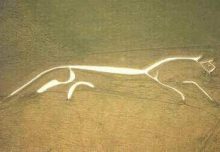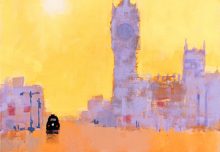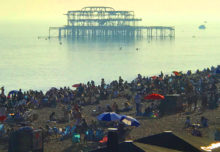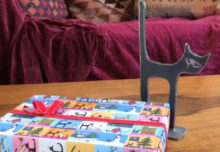CANVAS, HARDBOARD, PAPER, or PLANK
A lot of non-artists don’t have much idea about why artists use such a variety of surfaces for their paintings. So here is a very basic whizz through the subject.
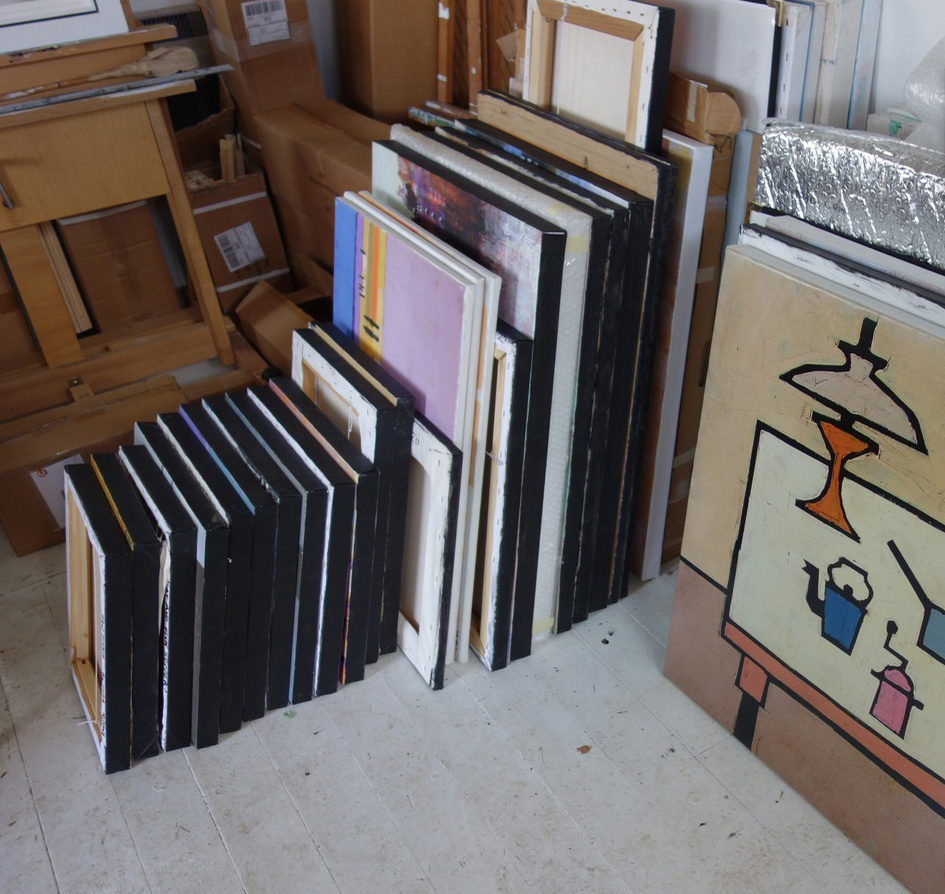
stack of canvases in studio
Canvas, hardboard, paper or plank. These four surfaces are the common available products that an artist can paint on, or have used, for making his or her paintings. Of course there are also other surfaces such as walls, fences, metal, pottery, and even human bodies that have been chosen by successful artists. But in this piece I am just concentrating on the standard flat grounds. Yes ‘grounds’ because that is the slightly posher established word to describe these painting surfaces.
From the Shorter Oxford English Dictionary…
‘Ground’ II. 3. B. Any material surface which is taken as a basis to work upon; esp. in painting and decorative art, a main surface or first coating of colour serving as a support for other colours or as a background for designs.
So, let us look at my list of four grounds. First alphabetically is canvas.
Canvas.
This surface is considered to be the obvious choice for original oil and acrylic paintings. But it is not suitable for water-colour or pastel.
The actual cloth could be anything from most expensive linen canvas, through standard cotton, down to hessian. There is a big price range as well.
As a rule canvases come stretched, although do-it-yourself is cheaper. Modern very cheap, ready stretched, Chinese import, canvases are fragile and stretched onto fixed flimsy wooden frames. Middle range and better quality canvases are stretched onto expanding wooden frames so that they can be tightened by tapping hidden wedges in the corners at the back of the stretchers.
Canvases usually have to be painted over with a flattish sealer layer of paint to stop them being too absorbent. Often the first coat will be plain white. When you buy a prepared canvas from an art supply shop it will be white.
The most obvious characteristic of canvas is the texture. This can be quite rough or very smooth or somewhere in between. The artist makes a choice depending on the style of painting. The roughest texture ground will drag the paint from a brush and leave little holes in the paint surface. Rough texture canvas is no good if you want to paint fine detail. But it is exciting and screams ‘real paint’ at the audience. Very fine canvas doesn’t do that. A smooth surface enables fine small detail instead.
Canvas has another advantage. It is lightweight and so quite large paintings can be transported easily, and hung onto ordinary walls without need for much re-enforcement.
Hardboard.
Next alphabetically in my list is hardboard. I will include plywood and other composite building materials into this category.
Again these grounds are suitable for oil or acrylic paints but not for water-colour, pastel or pencil.
Hardboard in the UK is also known as ‘Masonite’ in the US. It is cheaper per square inch than canvas by some way. It is tougher than canvas as well. So it is a popular first choice for art students and beginners. It usually comes with two quite different surfaces. There is a smooth side and a textured side where the surface is even rougher and dryer than most canvases. It is common to treat the texture with a substance like plaster first to fill in some of the holes. So the ground will be quite a bit heavier than a same-size canvas. This can inspire and enable the artist to create very textured artwork. The surface still needs a base coat to seal the surface. And the hardboard will warp if the artist doesn’t stiffen the board with battening to prevent this.
Plywood boards can be better quality and even purchased in art shops as ‘gesso’ panels. Gesso is the Plaster of Paris or gypsum surface that artists used centuries ago when they painted onto wooden panels or walls. It can be rubbed down to make an ultra smooth surface for fine detail. When used on a good quality plywood panel it provides a smooth, strong, stable surface for paintings. But a bought-in prepared gesso board loses the advantage of cheapness.
Paper.
Paper comes in many varieties. First thing to mention is that paper is no good for oil painting because the oil soaks into the soft fibres and spreads outwards discolouring the paper and sucking body out of the paint. But paper is OK for acrylics as well as water-colour, pastels and pencils.
Artist’s paper comes in a variety of weights or thicknesses. The thinner papers need to be stuck down to receive the wet paint because they buckle so easily. Paper pads come in blocks where the edges are stuck together so that lower layers of paper help keep the top layer flat while the artist paints.
But the lightweight and convenience of paper in sketchpads, flat sheets, or from a roll of paper, makes paper a favourite for many artists. And it is the essential ground for water-colourists , pencil drawers, and pastel painters.
The main disadvantage of paper is that the finished work will usually need to be protected by glass in a frame after it is finished because paper will be affected by atmospheric conditions and deteriorate quickly if left exposed.
Plank.
Lastly here is a quick word about traditional wooden panels, and the difference between these and the modern man-made hardboard and plywood surfaces. Wooden panels were historically constructed and used in warmer countries where the artist and patron needed to move the artwork around.
At that time the alternative direct wall painting would probably be made into wet plaster in the al fresco tradition, while a wooden panel is movable so that the artist could take their creative process to the sitter for a portrait. Typically this would be in a royal palace or top religious establishment. The artist made the artwork in a workshop and transported it to the chosen venue rather than just paint it onto the wall.
The surface was constructed using planks of wood because this was before the age of machinery that could produce thin or composite layers. The result was a surface that could eventually split and show divisions.
Conclusion.
Artists can put paint onto a lot of different surfaces. The practical criteria are usually cost, convenience, and type of paint to be used.
In another blog I will explore the social and creative implications of these choices because that is a much bigger and more exciting topic.
Some other blog posts that explain studio basics;
North Light in an Artists Studio
Colin Ruffell also writes about his art practice in www.colinruffell.com and www.howtobeanartist.com

